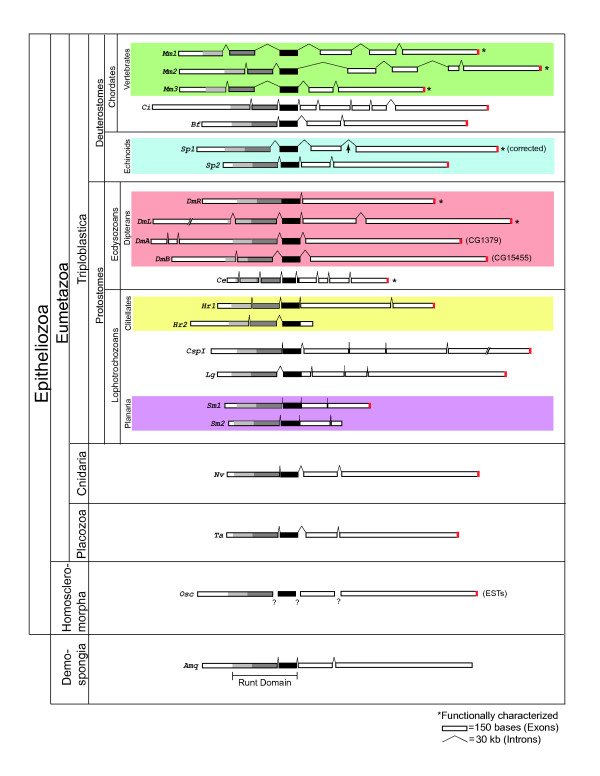Figure 1.
Schematic structure of Runx genes from the major metazoan clades. Scale models of Runx genes described previously [6,7] from mouse (Mus musculus, Mm), sea squirt (Ciona intestinalis, Ci), fruit fly (Drosophila melanogaster, Dm), nematode worm (Caenorhabditis elegans, Ce), and sea anemone (Nematostella vectensis, Nv) are shown in comparison to new models obtained from various recent genome projects (Table 1). The latter include Runx genes from lancelet (Branchiostoma floridae, Bf), sea urchin (Strongylocentrotus purpuratus, Sp, corrected; the arrow points to an intron that was previously missed [6,21]), leech (Helobdella robusta, Hr), polychaete (Capitella sp. I, CspI), snail (Lottia gigantea) planarian (Schmidtea mediterranea, Sm), placozoan (Trichoplax adherens, Ta), and demosponge (Amphimedon queesnslandica, Amq). The Runt domain is shaded grey and black, with the black box denoting the highly conserved exon encoding its C-terminal end. The C-terminal WRPY Groucho-recruitment motif is shaded Red. A hypothetical model of the homoscleromorph sponge Runx gene (Oscarella carmela, Osc) is shown; although as yet there is no genomic sequence from which exon-intron structure of this gene can be inferred (as indicated by question marks), the predicted exonic coding sequences containing the Runt domain and C-terminal LWRPY are represented in assembled ESTs.

